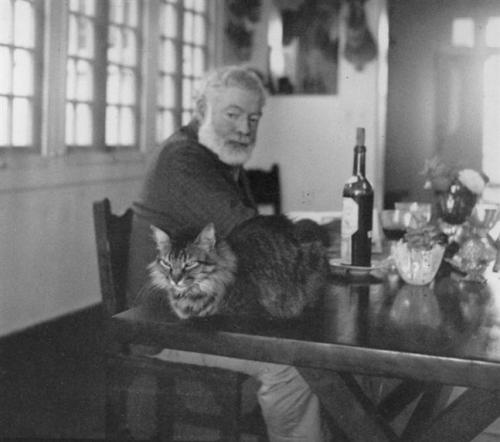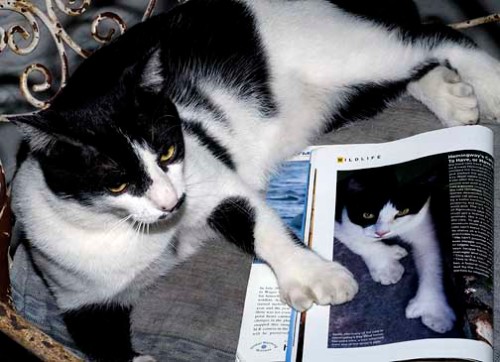Call me an effete, pusillanimous, pathetic fence-sitter if you will — and many have, so you’d be in good company — but I am having the most wretched time deciding on a winner of the Word Verification Competition. The entries are all so excellent, the standard so high, and my desire to stay on everybody’s good side so wantonly craven, frankly, that I am going to procrastinate for a short while. In fact, I might well invite on board a guest judge to help me out, and onto this referee, perhaps, I can deflect all the potential anguish and opprobrium.
I said I was craven.
I would like again to thank everybody for stopping by with their entries, and for taking so much time and effort in crafting those wonderful, erudite and hilarious definitions.
There’ll be another contest coming up, too. Maybe I’ll make this a regular once-a-week feature. The next will be on a different subject, though, most likely taking Ernest Hemingway as its inspiration.

See that cat, by the way? It is probably a Maine Coon and possibly what is known as a ‘mitten cat’, ‘thumb cat’, ‘boxer’ or ‘Hemingway cat’. More precisely, it is polydactyl, being in possession of way more than the reasonable number of digits to which a cat should feel entitled. Greedy b*stard, monopolising all the dactyls. Although here it’s doing that whole ‘look, I have no legs at all’ trick that cats like smugly to pull.
Polydactyl cats can have up to seven toes per paw. Some Canadian feline called Tiger sits pretty in the Guiness Book of World Records with 27, leaving it a tad imbalanced on one corner one would think, but there are reports of another of these creatures with a full non-leap-year-February’s worth of toes. Twenty-eight is what I’m trying to say, in my mealy-mouthed manner.
Here’s one — caught looking itself up in the latest edition of “PUSS”:

How very vain.
They are reasonably common in west Wales and the southwest of England, whence they are likely to have been exported to North America: sailors loved these cats, for their super-feline climbing abilities, sure-footedness and enhanced rodent-seeking skills. And it’s rumoured that the calicos have the power of invisibility, too.
In the USA they are most common along the eastern seaboard, and it was a Bostonian ship’s captain who gifted one to Ernest Hemingway in Key West. So enamoured was the author that the descendants of this critter remain protected under the terms of his will, and 50 or 60 of them now roam the Ernest Hemingway Museum.
So that’ll be about 1,200 razor-sharp claws haunting the place, freaking out perfectly innocent bibliophiles who simply want to learn about The Old Man and the Sea.




 Thanks to
Thanks to